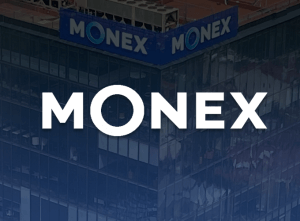How will MiFID II affect YOUR brokerage? Who has to report, and where do you stand? – Live from Cyprus
Price quality, speed of execution, likelihood of execution, settlement size, information relating to execution venue and financial instrument traded. The amount and nature of the reported data must be published and be made available for public viewing on a quarterly basis, says Point Nine’s Andrea Peratitis

Yesterday morning, FinanceFeeds attended a briefing, along with several electronic trading industry executives representing brokerages, legal entities, hedge funds, management consultancies and institutional entities, in which the MiFID II post trade reporting procedure was explained by senior executives of post-trade execution, operation, processing and reporting company Point Nine.
As part of the symposium which was held in Limassol, Cyprus, the subject of post-trade reporting responsibility was covered by Andrea Peratitis, Head of Regulatory Reporting & Compliance at Point Nine.
In presenting the reporting requirements under the impending MiFID II directive, Ms. Peratitis explained that the categories that will be integral to the regulatory structure will include best execution, and that the directive targets investment firms and trading venues as well as liquidity providers and systematic internalizers that operate in any jurisdiction within the European Union.
With regard to investment firms of any type which execute client orders on European and third country execution venues, regulation under MiFID II will insist that trades are reported across the entirety of the execution thread, including from third country venues outside the European Union.
Ms Peratitis elaborated on this, informing delegates that qualitative data should be separated according to each class of financial instrument and that brokers must publish full post trade information on their sites on an annual basis.
“Regulated markets (RM), multilateral trading faciltiies (MTFs) or organized trading facilities (OTFs) all should report and publish post trade data according to execution venue reporting requirements” she explained.
MiFID II categorizes the difference between each type of trading venue, and on this basis, Ms Peratitis explained how these are distinguished according to MiFID II.
“In terms of the differences between MTFs, OTFs and systematic internalizers (SIs) in MiFID II, there are some important differntiating factors. MTFs are considered to be the same as regulated markets but without enhanced government requirements, whereas OTFs have a discretionary matching system where only non-equities cna be traded, and regulated and unregulated firms can trade on OTFs whereas MTFs are only available to regulated firms. A systematic internalizer represents a company which internalizes its trades (b-book – Ed). In the case of systematic internalizers, all types of OTC transactions can be performed and traded but only the clients of that investment firm can trade with that type of company” she said.
What data needs to be published?
MiFID II will require substantial granular data to be made publicly available by regulated entities.
Ms. Peratitis explained that these include “Price quality, speed of execution, likelihood of execution, settlement size, information relating to execution venue and financial instrument traded. The amount and nature of the reported data must be published and be made available for public viewing on a quarterly basis.”
Who needs to report?
Ms Peratitis detailed the type of entities that will need to report their trades publicly post implementation of MiFID II. “These will be categorized as financial counterparties, non financial counterparties exceeding the clearing threshold defined under EMIR 10, credit institutions, market operators and trading venues, central counterparties and third country firms providing investment services within EU.”
“The reporting obligation shall apply to transactions in financial instruments in respective of whether or not such transactions are carried out on an EU trading venue. For example, derivatives which are traded outside the EU where the underlying is traded on an EU trading venue will have to be reported” – Andrea Peratitis, Head of Regulatory Reporting & Compliance, Point Nine
Interestingly, as far as the types of derivatives that will have to be reported, all FX derivatives are included in the remit except for spot FX.
In order to make the reporting process organized and efficient, transaction reports made to national competent authorities (NCAs) can be done by the investment firm itself, via an Approved Reporting Mechanism (ARM) or trading venue if the firm is a member of a trading venue.
“When delegating reporting to ARM or trading venue there are three execmptions” explained Ms Peratitis. “The first is when a non-EEA firm only has one branch within the EU, then the reporting should go to the national reporting authority of the branch but if the company is a non EEA firm and has branches located within multiple jursidictions within the EU then the company should report to just one jurisdiction of its choice and report all transactions through that particular branch.”
The second exception applies to trading venues executing trades on their platforms by members that are not investment firms, and the third refers to home competent authorities which are authorities located outside of the EEA and thus outside the scope of MiFID II / MiFIR.
“The reporting obligation lies with the entity that is performing the trade execution, that being an OTF, MTF or SI. If trading is taking place from a particular venue and the counterparty is not an internalizer, then the obligation for reporting post trade goes to the seller. When buy side transacting is taking place off-venue and the counterparty is not regulated in the EU then the responsibility for reporting is with the buy side via an Approved Publication Arrangement (APA).
“In this case” concluded Ms Peratitis, “reporting is only to be done via an APA. Trades must be reported as close to real time as possible, and the current guidelines state that until January 2020 the timescale for reporting each trade should be within 15 minutes from execution of a transaction and after January 2020, it will be reduced to 5 minutes.”
Image: Andrea Peratitis of Point Nine explains all at the Alasia Hotel, Limassol, Cyprus









